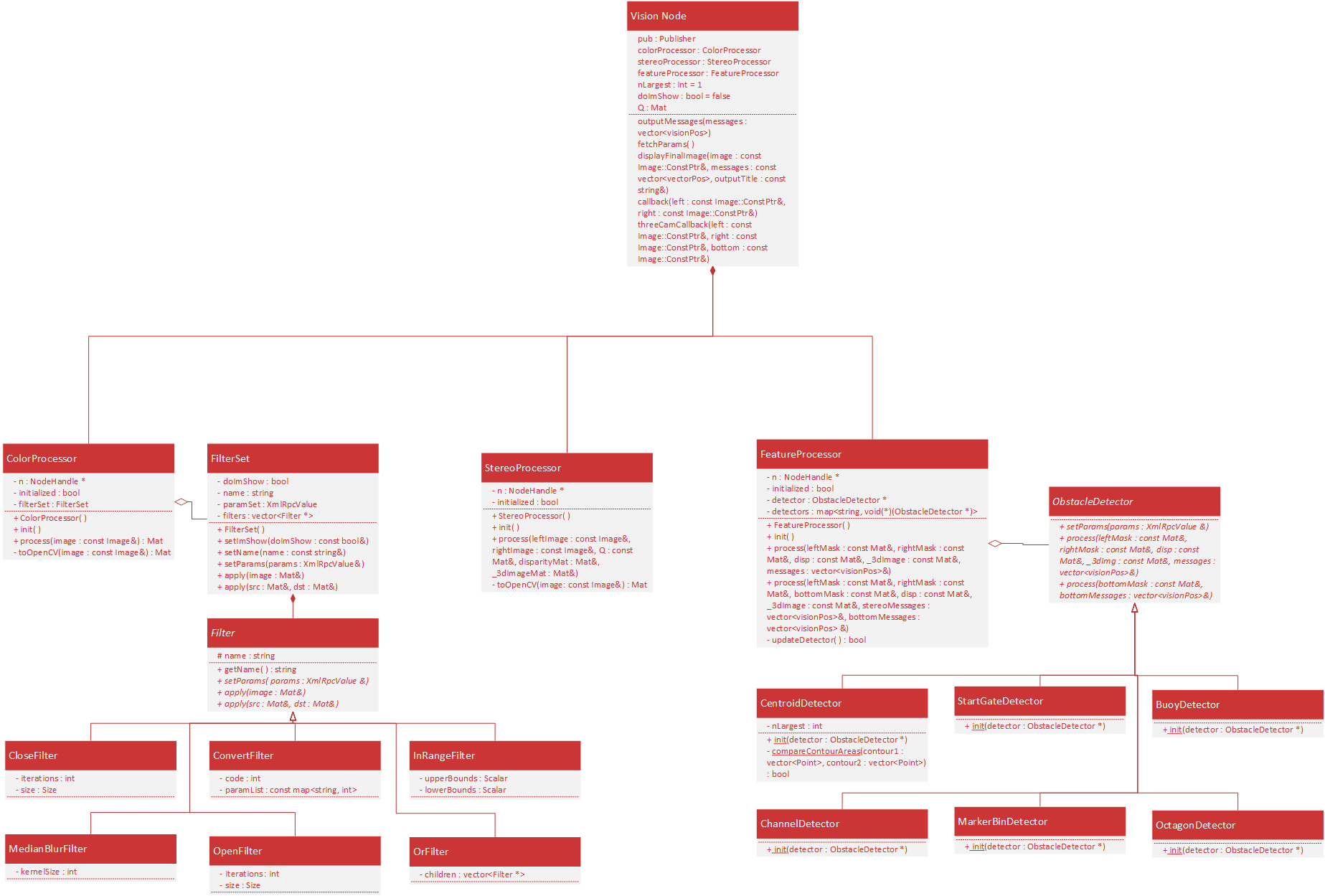User Tools
Table of Contents
Vision
This page is stale and needs to be reviewed. It may be deleted or radically changed in the near future.
Core Functionality
- The vision system on the sub is performed by multiple vision nodes. Each currently contains a number of different processors, explained later, which perform a task on the latest images captured from the cameras. These images are synchronized with each other in time.
- There is one vision node spawned for each task required to be performed using the vision.launch file. For more information on using this launch file, see Running the Vision System in ROS below.
- The processors used by the vision node currently are as follows and described below.
Processors
ColorProcessor
Purpose
Performs color masking according to the parameter file for the node.
Structure
The ColorProcessor contains a FilterSet. This FilterSet will sequentially apply each Filter it contains which are each a single OpenCV operation on an image.
Parameters
The parameters for the ColorProcessor part of a vision node should be formatted as follows:
filters:
- [filter name]: {[filter parameters]}
- [filter name]: {[filter parameters]}
Where the [filter name] is known by the ColorProcessor allowing it to create the proper filter and the [filter parameters] are parsed by the filter. An unlimited number of filters is allowed. Each filter in the list will operate on the result of the previous filter's output.
StereoProcessor
Purpose
Utilizes the two forward facing cameras to determine the distance an object is away from the cameras. This requires the cameras to be calibrated.
Structure
This processor is currently under construction and is not finalized. This section will be changed in the future.
Parameters
The StereoProcessor currently does not use any parameters. This may change in the future, however.
FeatureProcessor
Purpose
More accurately identifies contours in the image as being a particular object.
Structure
The FeatureProcessor contains a single ObstacleDetector which is an abstract class that the detectors for each obstacle in the course inherit from. Each detector must also contain a static init function which takes an ObstacleDetector pointer and initializes it to a new instance of that detector.
Parameters
The parameters used by the FeatureProcessor of each vision node are formatted as follows:
features:
detector: [detector name]
params: {[detector parameters]}
There should be only one of these blocks in each parameter file where [detector name] is the string mapped to the init function for the desired detector and [detector parameters] is the set of parameters required by the detector.
Cameras
See the Cameras page for more information on the details and use of the cameras.
Running the Vision System in ROS
After making sure that the cameras are running if needed, use the following command to start the vision system.
roslaunch robosub vision.launch
To remap left and right camera topics, append
leftImage:=[newTopic]
and/or
rightImage:=[newTopic]
(bottom camera to be implemented) the topics for the simulator are
/camera/(left|right|bottom).
To use simulator color parameters and listen to simulator topics by default (they can still be overwritten using the above leftImage and rightImage remaps), append
simulated:=true
(This feature could change in the near future) After this, you will see the launch file spin up multiple nodes. The vision system is running!
If you would like to see the images that the system is using, you can run the following command:
rosparam set /[vision node name]/processing/doImShow true
You will then see many windows open each with a unique image.
